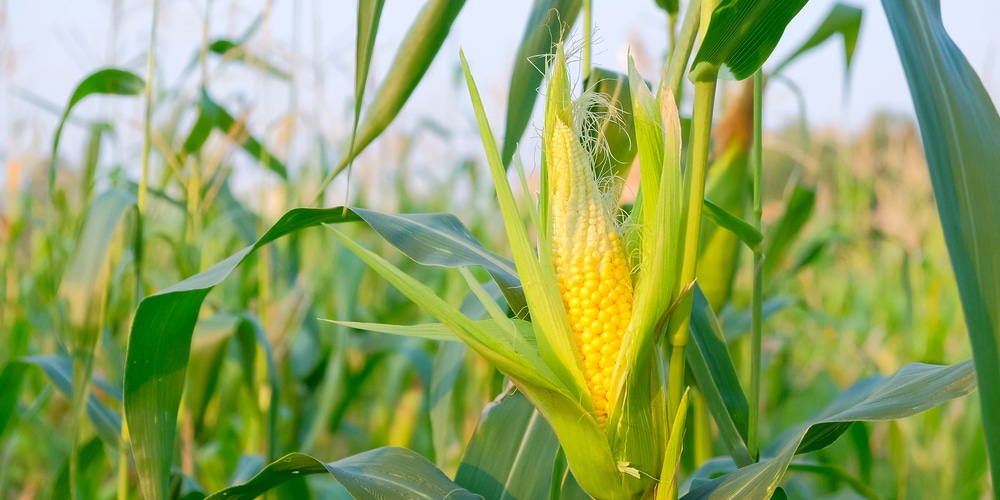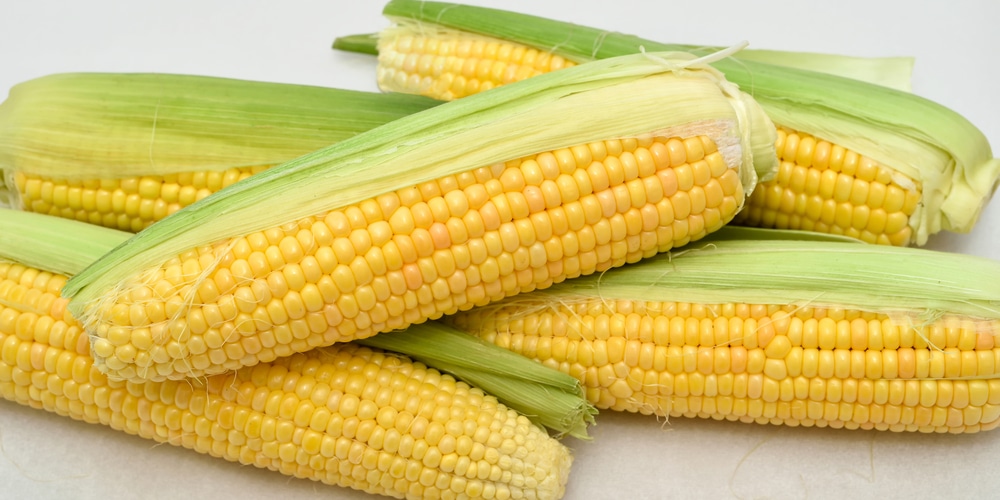Climate diversity, stunning landscapes, and access to water make Utah one of the best places to grow corn. Its ideal conditions allow growers to produce large yields of high-quality corn. The Beehive State has an estimated 16 million acres of farmland, with nearly 60 percent devoted to crops like corn. Let’s look at when to plant corn in Utah?
When to plant corn in Utah
Timing is everything when planting corn, as well as other vegetables in Utah’s climate. Despite this, many farmers in Utah struggle to maximize their corn production due to incorrect planting.
Corn, like most vegetables, is a warm-season crop. This means it should be planted after the last spring frost and when the soil has warmed to at least 60 degrees Fahrenheit.
The ideal time to plant corn in Utah is usually between late April or early May, depending on how soon spring arrives. If spring arrives earlier in the year, planting can be done in mid-April.
Alternatively, if spring is late to arrive, planting can be pushed back to early May.
While the average last spring frost in Utah mainly occurs in mid-May, it’s always best to err on the side of caution and wait a few extra days before planting.
This will help ensure that your corn plants are not damaged by any late-season frosts.
How Can You Know It’s the Perfect Time to Plant Corn?
There are a few things you can do to check if it’s the perfect time to plant corn. One way is to keep an eye on the weather forecast. If there is a week of warm weather with temperatures above 60 degrees Fahrenheit forecasted, that would be an ideal time to plant your corn seeds.
Another way is to use a soil thermometer to check the temperature of your soil. The ideal soil temperature for corn planting is between 60 and 65 degrees Fahrenheit. If your soil isn’t quite at that temperature yet, you can wait a few more days or use row covers to help warm it up.
Moreover, you should also consider the maturity date of the corn variety you’re planting. Some varieties mature faster than others, so it’s important to factor that in when deciding when to plant.
Corn usually takes around 90-100 days to reach full maturity, so if you’re looking to harvest your corn in late summer or early fall. Plan accordingly and adjust your planting date as necessary.
Tips to Maximize Your Corn Yield
To maximize your corn yield, pay attention to the following tips:
Planting Depth and Spacing
Corn should be planted about one to two inches deep and six to eight inches apart in rows that are 30 to 36 inches apart. This helps ensure proper root growth and nutrient absorption.
Planting your seeds at too shallow of a depth can lead to problems with moisture and circulation. With that being said, it’s important to make sure you have the right amount of soil covering them.
Fertilizer
Before planting, test your soil and add the necessary fertilizer. Corn is a heavy feeder, so it requires a lot of nutrients to produce a large yield. The amount of fertilizer you’ll need will vary depending on your soil test results.
Utah’s soil is naturally high in phosphorus, so you may not need to add as much of this nutrient. However, you will likely need to add nitrogen and potassium.
Additionally, you’d want to check the soil’s pH level and ensure it’s between six and seven. If it’s too acidic, you can add lime to raise the pH. Otherwise, if it’s too alkaline, you can add sulfur to lower the pH.
Watering
Corn needs about one to two inches of water per week, either through rainfall or irrigation. Water your corn plants deeply but less frequently to encourage deep root growth.
Consistent moisture is vital during the pollination stage, typically around three weeks after planting.
Weed Control
Weeds compete with corn plants for water, sunlight, and nutrients. This can lead to reduced yields. To avoid this, make sure to keep your cornrows free of weeds.
You can do this by hand-weeding or using herbicides. Just be careful not to damage the roots of your corn plants when weed control.
Pest Control
Pests can also reduce your corn yield. Some of the most common pests in Utah include cutworms, armyworms, and rootworms. To control these pests, you can use insecticides or traps.
You can also encourage predators like ladybugs and lacewings, which help keep these pests in check.
Harvesting
You’ll know your corn is ready to harvest when the kernels are plump and milky. Corn is typically ready to harvest about 100 days after planting. Make sure to check your corn plants regularly during the last few weeks before harvesting. This will help ensure you don’t miss the window and end up with dried-out kernels.
Once you’ve determined that your corn is ready to harvest, use a sharp knife to cut the ears from the stalk. Be careful not to damage the kernels. Then, husk the ears and remove any silk fibers.
When to plant corn in Utah: Final Thoughts
Planting and growing corn in Utah is more challenging than in other states because of our shorter growing season.
However, by following the tips above, you can still produce a large yield of this delicious and versatile grain. Just pay attention to your plants and adjust your care accordingly throughout the season.
Related Article: Can You Plant Corn in Clay Soil?


